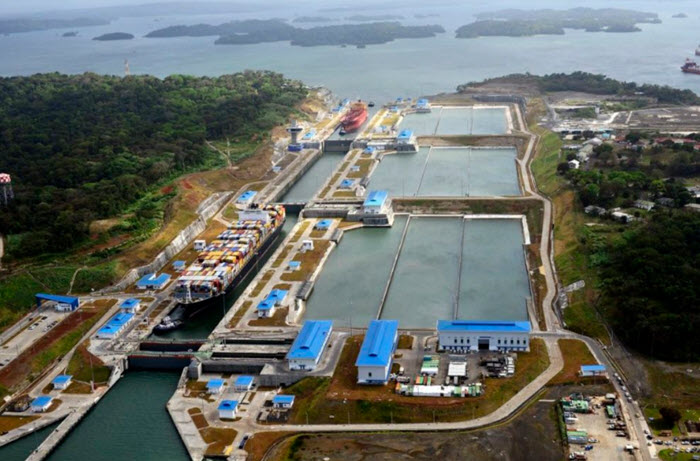Paul Page writes in the Wall Street Journal about the challenges facing the Panama Canal.
The head of the Panama Canal expects seasonal restrictions on shipping, including new “freshwater surcharges,” to continue for several years until canal administrators find a long-term solution to droughts that have hit operations at the trading hub.
Canal Administrator Ricaurte Vásquez said authorities are considering pumping water from elsewhere in the country or building a dam that would store more water at Gatun Lake, which provides water to help ships pass through the locks between the Pacific and Atlantic oceans. Either project could take up to three years to complete.
We expect the measures to continue until we have a permanent solution,” Mr. Vasquez said in an interview.
The Panama Canal Authority announced the new surcharge this week, and said it would be imposed year-round beginning Feb. 15. The canal is adding a $10,000 charge per transit and a second variable fee based on the water level of Gatun Lake when a vessel moves through the canal. It also added new limits on the daily reservation slots available to ships, along with other measures meant to limit the number of vessels moving through the facility each day.
Mr. Vasquez said the lower water levels during Panama’s dry season are the result of changing weather patterns that have left less water to draw from.
“We have been seeing a different rain patterns, with higher temperatures and larger evaporation,” he said. “Can we directly relate that to climate change? We do not have the scientific evidence to be able to say that, but it appears the elements are there.”
The canal authority said in announcing the surcharge that the past year’s rainfall was 20% below the historic average and the fifth driest year in 70 years.
“Now, we have occasional rains with sometimes larger volumes per event. The watershed fills and the excess rain can’t be stored and simply runs off,” Mr. Vasquez said.
Canal authorities have two potential longer-term solutions on the drawing board.
One would pull in water through a pipeline from a lake with higher water levels about 100 miles from the canal, a project that would cost more than $1 billion, Mr. Vasquez said. The second would be to build a dam to enable the canal authority to store more water and regulate the flow, a plan that would carry a roughly $2 billion price tag.
The canal handled 13,785 vessel transits in its fiscal year ending Sept. 30, 2019, most of them large oceangoing ships in international trade, and collected $2.59 billion in tolls, according to the Panama Canal Authority.
